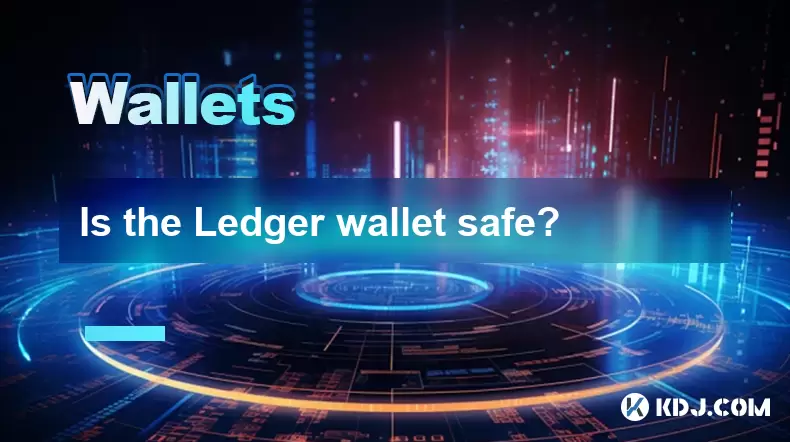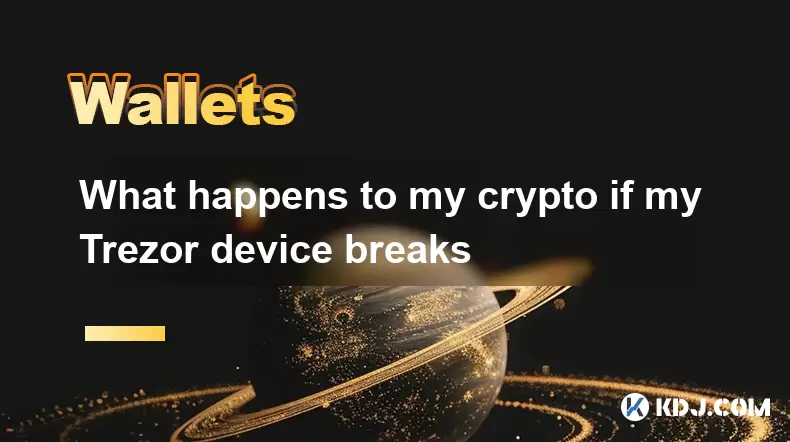-
 Bitcoin
Bitcoin $117,991.5647
-0.03% -
 Ethereum
Ethereum $2,966.4808
0.18% -
 XRP
XRP $2.8076
0.64% -
 Tether USDt
Tether USDt $1.0003
0.00% -
 BNB
BNB $689.9050
-0.63% -
 Solana
Solana $162.0407
-0.80% -
 USDC
USDC $0.9999
0.00% -
 Dogecoin
Dogecoin $0.1995
-1.51% -
 TRON
TRON $0.3001
-1.21% -
 Cardano
Cardano $0.7426
3.25% -
 Hyperliquid
Hyperliquid $47.7978
2.84% -
 Stellar
Stellar $0.4411
16.52% -
 Sui
Sui $3.4267
0.15% -
 Chainlink
Chainlink $15.3148
0.07% -
 Bitcoin Cash
Bitcoin Cash $506.5880
-1.91% -
 Hedera
Hedera $0.2222
12.41% -
 Avalanche
Avalanche $21.2049
1.67% -
 UNUS SED LEO
UNUS SED LEO $9.0606
-0.19% -
 Shiba Inu
Shiba Inu $0.0...01325
-0.86% -
 Toncoin
Toncoin $2.9979
0.32% -
 Litecoin
Litecoin $94.3717
1.13% -
 Polkadot
Polkadot $3.9873
-0.29% -
 Monero
Monero $336.1497
0.92% -
 Dai
Dai $0.9999
-0.01% -
 Uniswap
Uniswap $8.5189
-0.60% -
 Ethena USDe
Ethena USDe $1.0005
-0.04% -
 Pepe
Pepe $0.0...01236
-0.92% -
 Bitget Token
Bitget Token $4.4002
-0.23% -
 Aave
Aave $303.5433
1.05% -
 Bittensor
Bittensor $391.1314
-0.35%
Is the Ledger wallet safe?
A Ledger wallet securely stores cryptocurrencies offline using hardware encryption, protecting private keys from online threats.
Jul 11, 2025 at 01:28 am

What Is a Ledger Wallet?
A Ledger wallet is a type of hardware wallet designed to securely store cryptocurrencies offline. Unlike software wallets that are connected to the internet, hardware wallets like Ledger provide an added layer of security by keeping private keys isolated from online threats. The Ledger Nano S and Ledger Nano X are two of the most popular models used by crypto enthusiasts worldwide. These devices support a wide range of cryptocurrencies, including Bitcoin (BTC), Ethereum (ETH), and many ERC-20 tokens.
One of the key features that sets Ledger apart is its use of secure element chips, which are commonly used in credit cards and passports for secure data storage. This technology ensures that private keys never leave the device, making it extremely difficult for hackers to access funds even if the connected computer is compromised.
How Does Ledger Protect Your Private Keys?
The primary function of a Ledger wallet is to protect your private keys, which are essential for accessing and managing your cryptocurrency holdings. When you set up a Ledger wallet, it generates a 24-word recovery phrase, also known as a mnemonic phrase. This phrase acts as a backup and allows you to recover your wallet in case the device is lost or damaged.
Private keys are stored inside the Ledger’s secure chip, and they are never exposed to the outside world. Even when you sign a transaction, the process occurs within the device itself, ensuring that no malicious software on your computer can intercept sensitive information. Additionally, each transaction must be manually confirmed using the physical buttons on the device, adding another layer of user verification.
Can You Trust the Ledger Company with Your Data?
Ledger is a well-established company based in France and has been in the cryptocurrency space since 2014. It has built a strong reputation for transparency and security. One important point to note is that Ledger does not store users' private keys or recovery phrases on their servers. All critical data remains on the hardware wallet or in the user's memory.
The company also provides open-source firmware for its wallets, allowing developers and security experts to audit the code for vulnerabilities. While some may question whether Ledger could potentially introduce backdoors, there has been no evidence to support such claims. Furthermore, users have full control over their assets at all times, and Ledger cannot access or manipulate funds without physical possession of the device and the PIN code.
What Are the Risks Associated With Using a Ledger Wallet?
While Ledger wallets are considered among the safest options for storing cryptocurrency, they are not entirely risk-free. One potential threat is physical theft. If someone gains access to your device and knows your PIN, they could potentially steal your funds. Therefore, it is crucial to keep your Ledger wallet in a secure location and never share your recovery phrase with anyone.
Another risk involves phishing attacks. Scammers may attempt to trick users into revealing their recovery phrases through fake websites or emails. Always ensure that you are downloading the official Ledger Live app from the company's verified website and double-check URLs before entering any sensitive information.
Additionally, malware-infected computers can pose a threat during transaction signing. Although the private keys remain protected, malware could alter the recipient address or amount during a transaction confirmation. To mitigate this risk, always verify the details displayed on your Ledger screen before approving any transaction.
How to Set Up and Use a Ledger Wallet Securely
Setting up a Ledger wallet involves several critical steps that must be followed carefully to ensure maximum security:
- Unbox the device and check for tampering: Make sure the packaging is sealed and shows no signs of damage.
- Connect the wallet to your computer via USB: Open the official Ledger Live application after downloading it from the verified source.
- Set up a new wallet and create a recovery phrase: Write down the 24-word recovery phrase on the provided card and store it securely.
- Set a strong PIN code: Avoid using simple combinations like "1234" or "0000". Choose a unique PIN and memorize it.
- Install necessary apps: Ledger Live allows you to install apps for specific cryptocurrencies like Bitcoin or Ethereum.
- Verify transactions on the device screen: Always confirm the transaction details directly on the Ledger display before pressing the buttons to approve.
Never store your recovery phrase digitally or take screenshots of it. Physical storage in a safe or safety deposit box is recommended.
Frequently Asked Questions (FAQs)
Can I use my Ledger wallet on multiple computers?
Yes, you can use your Ledger wallet on multiple computers. The wallet itself stores your private keys, so as long as you connect it to a trusted device running the official Ledger Live software, you can manage your funds from anywhere. However, always ensure that the computer is free from malware and only download the Ledger Live app from the official website.
What happens if my Ledger device breaks or gets lost?
If your Ledger device becomes damaged or lost, you can recover your funds using the 24-word recovery phrase. Simply purchase a new hardware wallet—either another Ledger or a compatible brand—and restore your wallet using the recovery phrase. It is essential to keep your recovery phrase in a secure and accessible place.
Is it possible to use a Ledger wallet without installing Ledger Live?
While Ledger Live is the recommended interface for managing your wallet, it is possible to use alternative third-party services like MyEtherWallet (MEW) or Electrum for certain cryptocurrencies. However, doing so requires advanced knowledge and careful handling to avoid mistakes. For most users, sticking with Ledger Live is the safest and most user-friendly option.
Can someone hack my Ledger wallet remotely?
Remote hacking of a Ledger wallet is highly unlikely due to the offline nature of hardware wallets. Since private keys never leave the device, attackers cannot access them remotely. However, physical access combined with knowledge of the PIN could allow someone to steal funds. Therefore, securing both the device and the recovery phrase is crucial.
Disclaimer:info@kdj.com
The information provided is not trading advice. kdj.com does not assume any responsibility for any investments made based on the information provided in this article. Cryptocurrencies are highly volatile and it is highly recommended that you invest with caution after thorough research!
If you believe that the content used on this website infringes your copyright, please contact us immediately (info@kdj.com) and we will delete it promptly.
- XRP, SEC Appeal, Bitcoin & Ethereum: A Crypto Crossroads
- 2025-07-13 14:50:12
- Bitcoin Hypergrowth: Riding the Crypto Price Wave Like a Pro
- 2025-07-13 14:30:11
- Meme Coins, Arctic Pablo, and ROI: Riding the Crypto Wave
- 2025-07-13 14:30:11
- Pump.fun, Memecoins, and Funding Frenzy: What's the Deal?
- 2025-07-13 14:50:12
- BlockDAG's Presale Frenzy: A 3025% Return Opportunity?
- 2025-07-13 14:55:12
- BlockDAG Presale Heats Up: Is a 3000% Gain on the Horizon?
- 2025-07-13 15:10:12
Related knowledge

What is a hardware wallet's secure element
Jul 11,2025 at 10:14pm
What is a Hardware Wallet's Secure Element?A hardware wallet is one of the most secure ways to store cryptocurrencies. Unlike software wallets, which ...

What is the difference between a custodial and non-custodial wallet
Jul 13,2025 at 03:21am
Understanding Wallet Types in CryptocurrencyIn the world of cryptocurrency, digital wallets play a crucial role in managing and securing assets. A wal...

How to add a new network to MetaMask
Jul 11,2025 at 11:42pm
Understanding the Need to Add a New NetworkWhen using MetaMask, a popular Ethereum-based cryptocurrency wallet, users often need to interact with diff...

How to add Ethereum L2 networks like Arbitrum to Trezor
Jul 11,2025 at 12:36am
What Is Ethereum L2 and Why Add It to Trezor?Ethereum Layer 2 (L2) networks, such as Arbitrum, are scaling solutions designed to reduce congestion on ...

What happens to my crypto if my Trezor device breaks
Jul 11,2025 at 01:49pm
Understanding Hardware Wallet FailureWhen you store cryptocurrency in a Trezor hardware wallet, the private keys are kept offline, offering a high lev...

How to find a specific receiving address on my Trezor
Jul 09,2025 at 10:36pm
Understanding the Purpose of a Receiving AddressA receiving address is a unique identifier used in blockchain networks to receive cryptocurrency. Each...

What is a hardware wallet's secure element
Jul 11,2025 at 10:14pm
What is a Hardware Wallet's Secure Element?A hardware wallet is one of the most secure ways to store cryptocurrencies. Unlike software wallets, which ...

What is the difference between a custodial and non-custodial wallet
Jul 13,2025 at 03:21am
Understanding Wallet Types in CryptocurrencyIn the world of cryptocurrency, digital wallets play a crucial role in managing and securing assets. A wal...

How to add a new network to MetaMask
Jul 11,2025 at 11:42pm
Understanding the Need to Add a New NetworkWhen using MetaMask, a popular Ethereum-based cryptocurrency wallet, users often need to interact with diff...

How to add Ethereum L2 networks like Arbitrum to Trezor
Jul 11,2025 at 12:36am
What Is Ethereum L2 and Why Add It to Trezor?Ethereum Layer 2 (L2) networks, such as Arbitrum, are scaling solutions designed to reduce congestion on ...

What happens to my crypto if my Trezor device breaks
Jul 11,2025 at 01:49pm
Understanding Hardware Wallet FailureWhen you store cryptocurrency in a Trezor hardware wallet, the private keys are kept offline, offering a high lev...

How to find a specific receiving address on my Trezor
Jul 09,2025 at 10:36pm
Understanding the Purpose of a Receiving AddressA receiving address is a unique identifier used in blockchain networks to receive cryptocurrency. Each...
See all articles

























































































